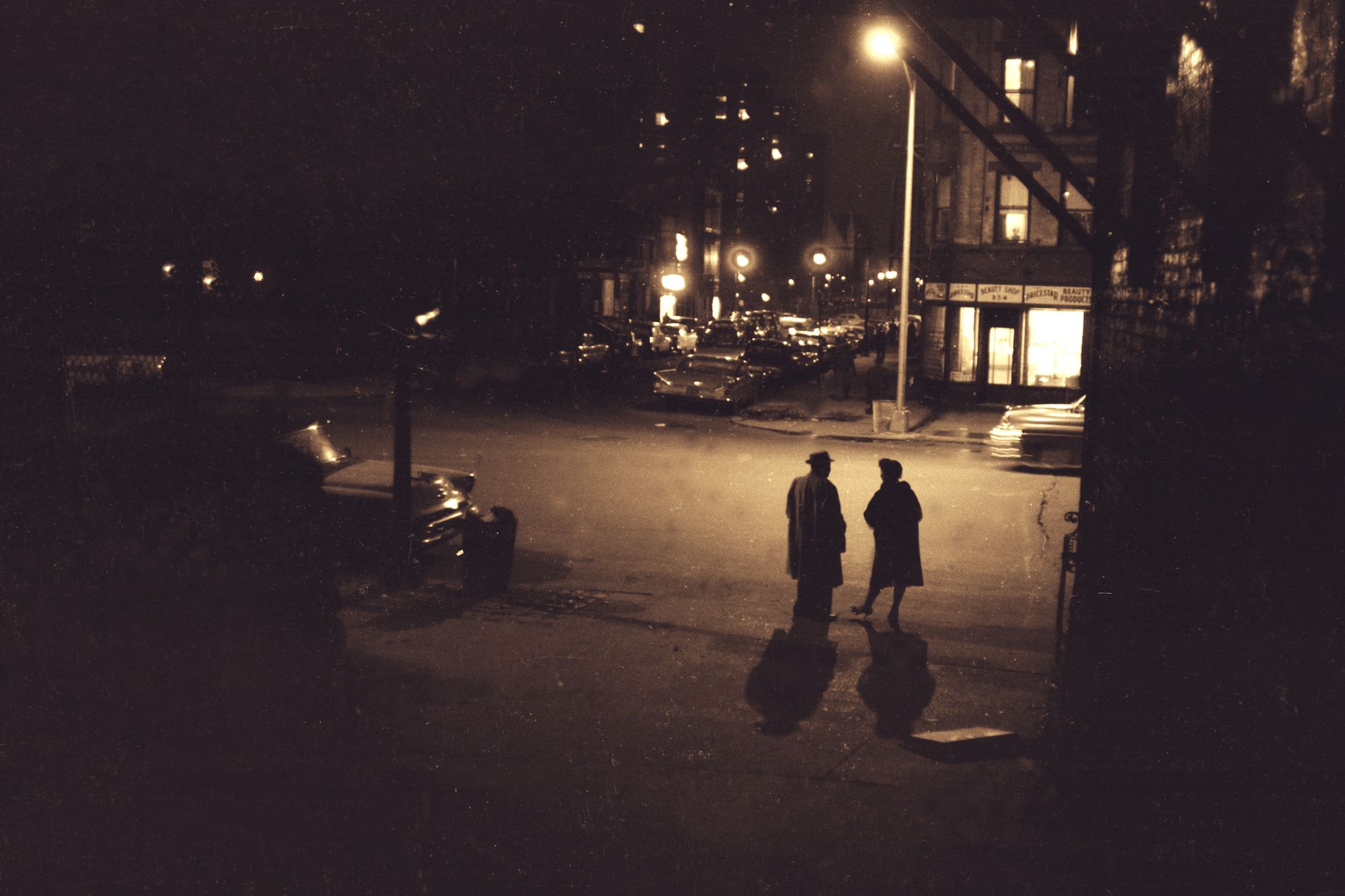
The First Light from Darkness
Alex Harsley
Alex Harsley has cast New York City’s unique medley of characters and neighborhoods as the subject of his work, throughout a career that has spanned nearly seven decades. Harsley first purchased a 35mm camera while in his 20s, and taught himself the inner workings of a darkroom as an employee of the district attorney office during the 1950s, where he became the first Black photographer to be hired. This became a formative period for the artist, as it provided an opportunity to spend his days traversing the urban landscape to document moments that defined daily life in a turbulent city. Of his work at that time, Harsley says, “I took pictures of people who would never have had their pictures taken.”
After he left the district attorney office in 1961, the artist continued to create tender portraits of the people, streets, and social upheavals that he came across. He amassed thousands of images—some vibrant and playful, others shadowy and laden with meaning—throughout the decades, up until the present day. In the 1970s, Harsley’s artistic practice became intertwined with a community-oriented role of his own creation. By then a resident of the Lower East Side, he started a non-profit organization called Minority Photographers, Inc. in 1971 to provide professional mentorship to others who were marginalized, which included fellow Black artists alongside a host of others that crossed racial and generational lines. Two years later, he moved into a dusty storefront space in the East Village and opened the 4th Street Photo Gallery, which hosted experimental exhibitions and quickly became an incubator for creative exchange within a community that included to-be heavyweights such as Dawoud Bey, Robert Frank, David Hammons, Cynthia MacAdams and Eli Reed. Remarkably, the gallery has resisted the tides of gentrification, and remains a lively space where Harsley works every day.
The First Light From Darkness—co-curated by Harsley’s daughter Kendra Krueger and coinciding with the 50th anniversary of Minority Photographers, Inc.—pairs a wide-ranging selection of the octogenarian’s photographs with a roving video work titled The First Light (2000–2020), an experimental endeavor which has culminated from a laborious process of shooting, layering, and editing over the past twenty years. A complex montage of flickering images and symbols set to a cacophonous score, the video takes viewers on a nonlinear journey across parallel dimensions, and metaphorically alludes to the cosmological origins of time and energy. These works will also be accompanied by historical materials culled from Minority Photographers, Inc. and the 4th Street Photo Gallery’s archives, to further contextualize Harsley’s lifelong dedication to his artistic and physical surroundings. As a whole, the exhibition pays tribute to an unsung hero within the creative landscape of New York City.
About the Artist
Alex Harsley (b. 1938 in Newport, South Carolina; lives and works in New York City, New York) is a self-taught, conceptual artist who explores dimensions of reality and entanglement, through the mediums of film and video. His reportage style of photography began in 1958, when he became employed as the first Black photographer for the New York District Attorney’s Office. In 1971 and 1973, he founded, respectively, Minority Photographers, Inc. and The 4th Street Photo Gallery, as refuges for artists of color. In addition to his own practice of documenting the personalities and intimate moments that have shaped the urban landscape, Harsley has collaborated with artists such as Candida Alvarez, Dawoud Bey and David Hammons. His work is included in the collections of the Ford Foundation and the Smithsonian Institution’s National Museum of African American History and Culture.
Alex Harsley: First Light From Darkness is made possible by the Affirmation Arts Fund of the William Talbott Hillman Foundation.
This exhibition is also supported, in part, by public funds from the New York City Department of Cultural Affairs in partnership with the City Council, and the New York State Council on the Arts with the support of Governor Andrew M. Cuomo and the New York State Legislature.